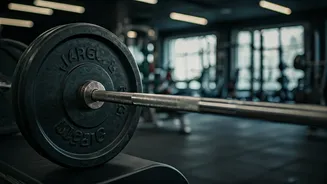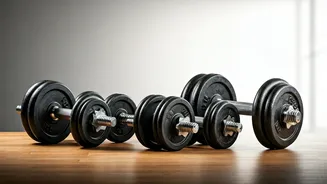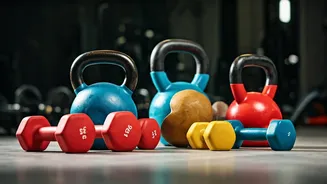Vest Introduction
The weighted vest, a simple yet effective tool in the realm of fitness, is essentially a vest that has pockets where weights, often in the form of small
iron bars or sandbags, can be added. It is designed to add extra resistance to your workouts, making everyday movements and exercises more challenging. This increased resistance translates to enhanced physical strength, stamina, and improved cardiovascular health. Its primary use involves augmenting the intensity of various physical activities, transforming them into more rigorous exercises that contribute to better fitness outcomes. The versatility of the weighted vest is one of its most appealing features. It can be integrated into a wide range of workouts, including walking, running, bodyweight exercises like push-ups and squats, and even cardio routines. The adjustable weight feature allows users to gradually increase the load, allowing a progressive increase in intensity, catering to all fitness levels. This adaptability promotes continual progression and helps individuals break through fitness plateaus by constantly challenging their physical abilities. The core benefit of incorporating a weighted vest into one's fitness regimen lies in its capacity to stimulate muscle growth. As the body works against the added resistance, the muscles are forced to adapt and strengthen, promoting increased muscle mass and definition. It also improves overall strength and endurance, assisting in more challenging workouts and allowing individuals to extend their exercise periods, enhancing fat loss as the body burns more calories. Furthermore, the use of weighted vests is also linked to improving bone density, which is critical for long-term health, as it reduces the risk of osteoporosis and other bone-related diseases. When used properly, they can be valuable in enhancing physical fitness and reaching a multitude of health objectives.
My Personal Journey
I've included weighted vests in my workout regime for quite some time now, and I've witnessed a tangible transformation in my physical prowess. Initially, I started with a modest weight, gradually increasing the load as I grew accustomed to the resistance. Incorporating a weighted vest into my routine wasn't an immediate transition; it was a process of understanding how my body reacted to the added strain. I began by wearing it during brisk walks and short jogs. This allowed me to acclimate to the extra weight and refine my technique. The initial days were challenging, as I felt the added burden, and my muscles ached a bit more than usual. However, as the days progressed, I noticed an improvement in my stamina. What was once a tough walk became less of a challenge, and my running pace and endurance increased. From there, I expanded its use to include bodyweight exercises. The weighted vest transformed my push-ups, squats, and lunges. Suddenly, the same exercises provided a far greater workout, intensifying the muscle engagement and overall training. The increase in resistance made me feel stronger, and the results quickly followed. I have used weighted vests in both indoor and outdoor settings. They have been an invaluable asset in pushing my fitness limits and helping me reach my exercise goals.
Key Considerations
Before diving into weighted vest training, certain considerations are essential to guarantee a safe and efficient experience. First, selecting the appropriate weight is crucial. It’s imperative to initiate with a weight that suits your current fitness level. Starting too heavy can lead to injury, and beginning too light may not provide the necessary challenge. Begin with a light weight and progressively increase as your strength improves. Secondly, pay close attention to your body. As you train with a weighted vest, carefully listen to your body's signals. If you feel any pain, stop immediately. It's crucial to acknowledge your body's limits and prevent overexertion, which could potentially result in injury. Always allow sufficient time for rest and recuperation, as muscles require time to recover and rebuild after being challenged. This can vary from person to person. Another essential aspect of weighted vest usage is maintaining proper form during exercises. The addition of weight can alter your balance and posture, increasing the risk of injury if not properly managed. Focus on executing exercises with correct form, and take some time to check your posture in a mirror to keep track of your movements. Remember that the goal is not to lift the maximum amount of weight possible, but to improve fitness while prioritizing safety. Furthermore, integrating the weighted vest gradually into your routine is critical. Do not jump into the deep end by immediately wearing it for all your exercises. Start by using it for shorter periods and then slowly increase the duration and intensity as your body adapts. By considering these essential factors, you can enjoy the advantages of weighted vest training safely and efficiently, greatly enhancing your fitness experience.
Choosing the Right Vest
The market offers a range of weighted vests, each with its unique features. The selection process is influenced by factors such as the weight range, the fit, and the style of the vest. Selecting a vest that is suitable for your fitness objectives is critical. Consider the weight range first: make sure it is adaptable to your current fitness level and allows room for development. Some vests provide a more comprehensive weight range, making them perfect for both beginners and experienced users. Next, ensure the fit is proper. A vest must fit comfortably and securely to allow for freedom of movement during workouts. Adjustable straps and closures can assist in achieving a personalized fit that prevents the vest from shifting or moving when you exercise. Comfort is key. The vest should evenly distribute the weight to avoid strain or discomfort. Look for vests with padded shoulders and breathable fabrics to ensure comfort, particularly during long or high-intensity workouts. Some vests include pockets for weight adjustment, allowing you to add or remove weight quickly and effortlessly. Weight distribution is critical for a balanced workout. The weight should be distributed uniformly across the vest to prevent uneven stress on your body. Select a vest that keeps the weight distributed on the front and back or around your core, for consistent weight distribution. The fabric and quality of construction matter when choosing a weighted vest. Choose durable materials like nylon or neoprene, which can resist wear and tear. Pay attention to the stitching and reinforcements, as they affect the vest's longevity and performance. Finally, read reviews. Reviews from previous users offer insights into the vest's performance, durability, and comfort. Reviews can offer practical advice and assist you in selecting a vest suitable for your fitness needs.
Workout Integration Tips
Integrating a weighted vest into your workout regimen effectively can dramatically enhance your fitness results. Start by introducing the vest to your current routines gradually. Begin with simple exercises or shorter durations to allow your body to adjust to the extra weight. This prevents potential injuries and aids in familiarizing yourself with the added resistance. Incorporating the weighted vest into various exercise routines can substantially improve the intensity. The best strategy is to integrate it with exercises that already challenge your strength and endurance. Use it for walking, jogging, or running to boost your calorie burn and intensify your cardio workout. When performing bodyweight exercises like push-ups, squats, and lunges, the weighted vest can increase muscle engagement, pushing you past your comfort zone and accelerating your results. Make sure to monitor your form carefully while using a weighted vest, because the extra weight can make it hard to maintain proper technique. Focus on controlled movements and good posture to reduce injury risks and enhance the effectiveness of each exercise. Vary your workouts by altering the weight and exercise selection regularly. This prevents plateaus and keeps your workouts challenging. Rotate the weight and exercises to keep your body guessing, helping to prevent exercise fatigue and promote consistent progress. Recovery is just as crucial as the workout itself, so make certain to provide your body with enough rest and recuperation time. Incorporate rest days into your schedule to give your muscles time to mend and rebuild. Drinking enough water and eating a healthy diet are equally important. These strategies ensure your body has the resources needed to recover and adjust. Following these approaches will enhance your workout routine by integrating a weighted vest effectively, accelerating your fitness and helping you to reach your health and fitness objectives.











